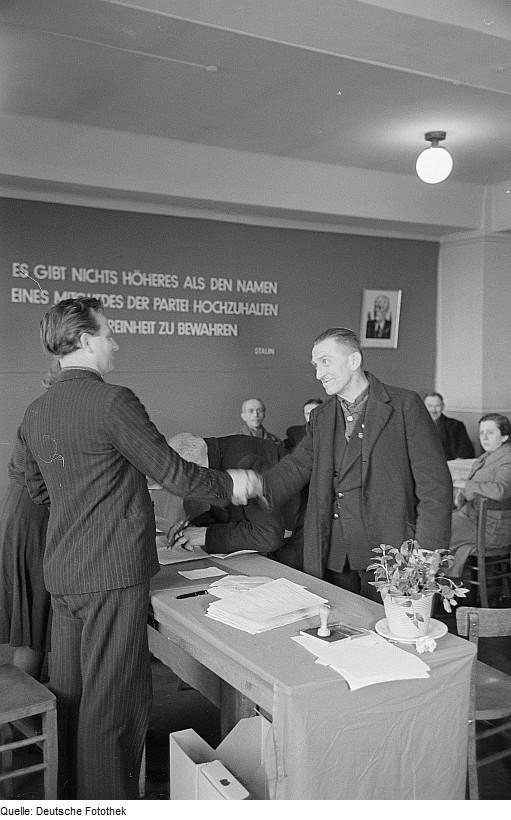Completed associated PhD project
Funded by the Bundesstiftung zur Aufarbeitung der SED-Diktatur (2010-2013)
This PhD project focuses on the rank-and-file members of the former socialist state party (SED) separately to its party leaders and apparatus. In the 1980s, almost every fifth adult in the GDR held a party document. For this reason, party members constituted both a large part of society as well as a group of their own within society. As a link between the regime and ‘its’ people, they were of crucial importance for the legitimacy and stability of the socialist party’s claim to power. In the acute crisis of autumn 1989, only a minority of the supporters of the political system defended the party regime. The majority of the party members left the SED and their party loyalty came to an end.
The project is based on the idea that this withdrawal of loyalty was not a spontaneous reaction. Instead it was the final step in a long process of delegitimisation, which is interpreted as an erosion. Contrary to the processes of erosion, the project analyses those factors that were responsible for cohesion and stability. In addition to the self-perception of different groups of party members, the practical experience of party life as well as the significance of the party membership in everyday life will be taken into consideration. The project aims to characterise the rank-and-file party membership and to explain the ‘sudden’ withdrawal of loyalty in autumn 1989.
The PhD project is embedded in the research project ‘History of the SED between the Building of the Wall and its Fall: Social History of a Communist State Party’.

